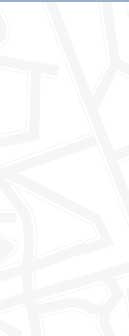Maria Eichhorn
Purchase of the Plot at Corner Tibusstraße/Breul, Province Münster, Hall 5, No. 672 (1997), contribution to the exhibition Sculpture. Projects in Münster 1997
[…]
The piece consisted of the bureaucratic steps required to obtain a plot of land—from selection, to purchase, to entry in the land-registry. Its descriptive title, Erwerb des Grundstückes Ecke Tibusstraße/Breul, Gemarkung Münster, Flur 5, No. 672 (Acquisition of the Plot at Corner Tibusstraße/Breul, Province Münster, Hall 5, No. 672; 1997), indicated this focus on process and dryly stated as it is designated in the land register. Purchase funds included the project budget and a contribution from the Landesmuseum, the institution sponsoring the exhibition. As with her Public Limited Company, the work’s presentation was dispersed throughout the city: the plot of land that marked her physical contribution could only be understood in light of documents displayed at the land-register and Landesmuseum. Eichhorn appropriately sold the property after the temporary exhibition.
Of course, Eichhorn did not simply replicate a standard real-estate transaction, collect the profit, and go on her merry way. Similar to her Public Limited Company, she manipulated the form to divert the normal process and yield subversive results. She stipulated in the mortgage agreement that the entire resale value would go to a local tenant’s association, Verein zum Erhalt preiswerten Wohnraums e.V. (Association for the Preservation of Affordable Housing), rather than the joint-owners, the Landesmuseum and herself. The Association formed in 1989 to protest the demolition and replacement with luxury condominiums of houses at Breul 31–38 and Tibusstraße 30a–c—precisely the terrain to which Eichhorn returned. This development scheme was symptomatic of real-estate trends in the inner city where property remains scarce. Rising property values were driving many long-term residents to the less expensive outskirts in the typical pattern of gentrification. The Association successfully thwarted the development by rallying public support. Today, the city owns the building and the Association acts as its tenant and administrator.
[…]
By creating a public sculpture through the machinations of private property, Eichhorn foregrounded the by now widely-known fact that ostensibly community-oriented exhibitions like Münster’s also serve elite economic interests. The empty plot dumbly materialized the project funds, calling attention to the exhibition’s material conditions. Her casting of the sponsoring institution in the role of real-estate speculator hinted that those conditions are deeply enmeshed in late capitalism.
The piece in fact drew considerable attention to Münster’s impacted real-estate market and the demographic shifts it spurred. Because the city owned the plot, its sale required the approval of the municipal real-estate department. The mayor supported the transaction, but the department balked at the idea of transforming the controversial site into an art piece. The debate moved into the city council where many members were also reluctant to draw attention to the area’s dubious history especially since the issues were still highly pertinent. The final vote divided the council along ideological lines, the larger liberal contingent winning by a slim margin.
The controversy surrounding Eichhorn’s piece attested to its political potency. It also evidenced the political and economic interests undergirding the exhibition that the piece merely implied. Most likely, the final vote did not merely reflect the council’s solid liberal conscious but its recognition that both the exhibition and sculptures it leaves behind bolster the city’s property values. Eichhorn’s transitory “sculpture” drew attention to this conflicted nexus of community and private, economic and artistic interests without contributing to it. It avoided the inadvertent violence of much public sculpture by refusing to physically impose on the surrounding community, foregoing aesthetics to benefit local inhabitants financially.
EXCERPT FROM
Elizabeth Ferrell, “The lack of interest in Maria Eichhorn’s work”, in: Art After Conceptual Art, ed. by A. Alberro, S. Buchmann, The MIT Press, Cambridge/Mass, London/England, 2006, pp. 196-211
Maria Eichorn
Born 1962 in Bamberg/D, lives and works in Berlin/D
Solo exhibitions
Maria Eichhorn Aktiengesellschaft/Maria Eichhorn Public Limited Company, Van Abbemuseum, Eindhoven, 2007
Die Anteilscheine der Kunsthalle Bern, Kunstmuseum Bern, 2005
Maria Eichhorn, Centre d'Art Santa Monica, Barcelona, 2004
Maria Eichhorn: Restitutionspolitik, Kunstbau, Städtische Galerie im Lenbachhaus, Munich, 2003
Prohibited Imports, Masataka Hayakawa Gallery, Tokyo, 2003
korrespondenz@maria-eichhorn.de, Kasseler Kunstverein, 2003
Das Geld der Kunsthalle Bern / Money at the Kunsthalle Bern, Kunsthalle Bern, 2001
The Artist's Reserved Rights Transfer and Sale Agreementby Seth Siegelaub and Bob Projansky, Salzburger Kunstverein,1998
Arbeit / Freizeit, Generali Foundation, Berlin/Vienna, 1997
Group exhibitions
Und So Hat Konzept Noch Nie Pferd bedeutet. Concept Has Never Meant Horse. Generali Foundation, Vienna, 2006
Zero Interest / Interessi Zero. Artistic strategies for an economy in crisis, Galleria Civica di Arte Contemporanea di Trento, Trento, 2005
Wie Gesellschaft und Politik ins Bild kommen / How Society and Politics get in the Picture, Generali Foundation, Vienna, 2005
Istanbul Biennale, Istanbul, 2005
3. Berlin Biennale, Berlin, 2003
Die offene Stadt, Kokerei Zollverein I Zeitgenössische Kunst und Kritik, Essen, 2003
Documenta 11, Kassel, 2002
Skulptur.Projekte in Münster, Münster, 1997
Informationsdienst, Palais des Beaux Arts, Brussels and other places, 1994
Venice Biennale, 1993
Bibliography
Maria Eichhorn Aktiengesellschaft, exhibition catalogue, Walther König, Cologne, 2007
Maria Eichhorn Public LTD., Maria Eichhorn, Simon Sheikh (ed.), Capital (It Fails Us Now), Berlin, 2006
Publishing the fact that something will remain unpublished / Veröffentlichen, daß etwas unveröffentlicht bleibt, artist book, Maria Eichhorn, Walther König, Cologne, 2006
Vergesellschaftung von Grund und Boden? zu Maria Eichhorns Erwerb des Grundstücks Ecke Tibusstrasse / Breul, Gemarkung Münster, Flur 5, Nr. 672, Holger Lauinger in Schrumpfende Städte, Band 2, Handlungskonzepte, ed. by Philipp Oswalt, Ostfildern-Ruit, 2005
Politics of Restitution, Grey Room 16, Winter, The MIT Press, Cambridge, Massachusetts, 2004
Maria Eichhorn Aktiengesellschaft, Maria Eichhorn, exhibition catalogue Documenta11, 2003
Occupying Space. Sammlung Generali Collection, ed. von Sabine Breitwieser, Walther König, Cologne, 2003
Arbeit Essen Angst, Kokerei Zollverein, ed. by Marius Babias and Florian Waldvogel, Essen, 2001
Maria Eichhorn: Interview with Daniel Buren (1997), Public Art/ Kunst im Öffentlichen Raum, ed. by Florian Matzner, Ostfildern-Ruit, 2001
Christian Kravagna, Maria Eichhorn; Artforum, Nr.10, p. 141-142
The Artists Reserved Rights Transfer and Sale Agreement von Seth Siegelaub und Bob Projansky, Ausstellungskatalog Salzburger Kunstverein, Salzburg, 1998
Arbeit/ Freizeit, Maria Eichhorn, Generali Foundation, Vienna, 1997
Skulptur Projekte in Münster, exhibition catalogue, Westfälisches Landesmuseum für Kunst und Kulturgeschichte, Münster, 1997
Wie entsteht eine Stadt?/ What is the origin of a city?, exhibition catalogue Westfälisches Landesmuseum Münster, Münster, 1997
Links
www.lwl.org/skulptur-projekte-download/muenster/97/index.htm
www.voxphoto.com/en/exhibitions/eichhorn/eirchhorn_en.html
http://artintelligence.net/review/?p=17
www.installationart.net/PDF/Eichhorn.pdf
















